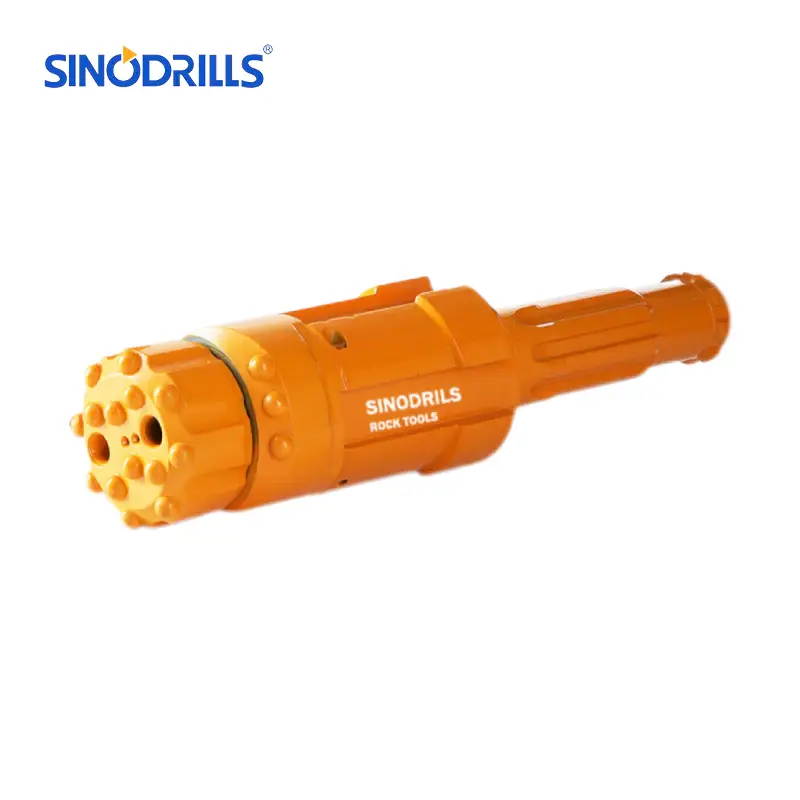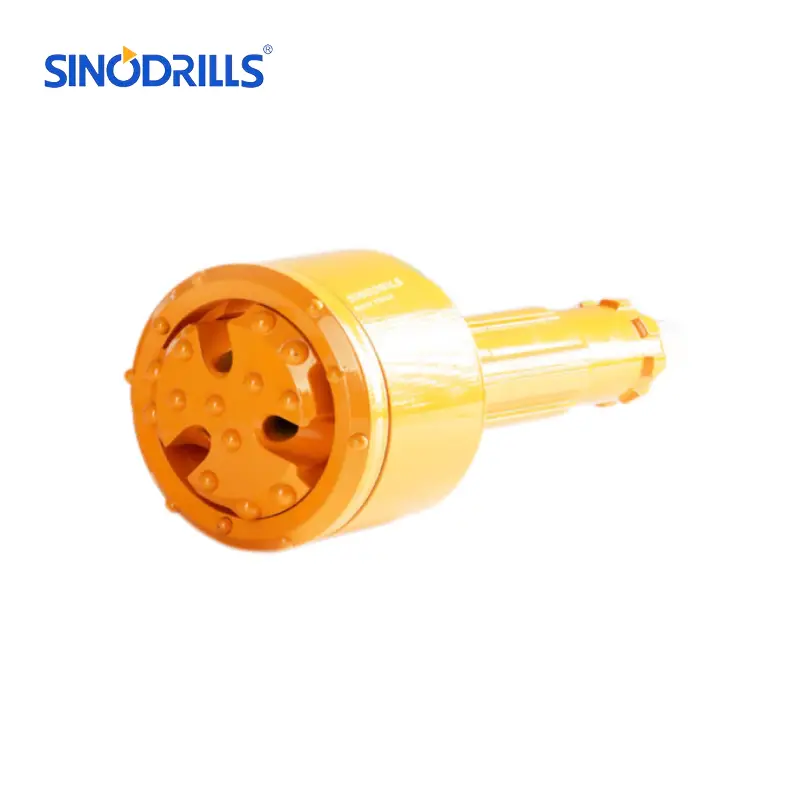Choosing the right drilling system is crucial for a successful project, especially when dealing with challenging ground conditions. Two popular methods for simultaneous drilling and casing are eccentric and concentric casing systems. Understanding their fundamental differences is key to optimizing efficiency and preventing borehole collapse.
This blog will delve into the mechanics, advantages, and ideal applications of both systems. We’ll explore how their unique designs—one with a swinging reamer and the other with a symmetrical pilot bit—affect performance, and help you determine which one is the best fit for your specific drilling needs.
What is a Casing System?
Recommended Casing System
A casing system is a fundamental part of drilling, particularly in oil and gas, geothermal, and water well projects. It involves the installation of large-diameter steel pipes, known as casing, into a drilled borehole. The primary purpose of this system is to protect and support the wellbore by preventing the formation walls from caving in.
Casing also isolates different geological formations to prevent fluid cross-contamination and provides a stable conduit for subsequent drilling and production operations. The casing is typically cemented in place to create a permanent, sealed wellbore.
What is the Eccentric Casing System?
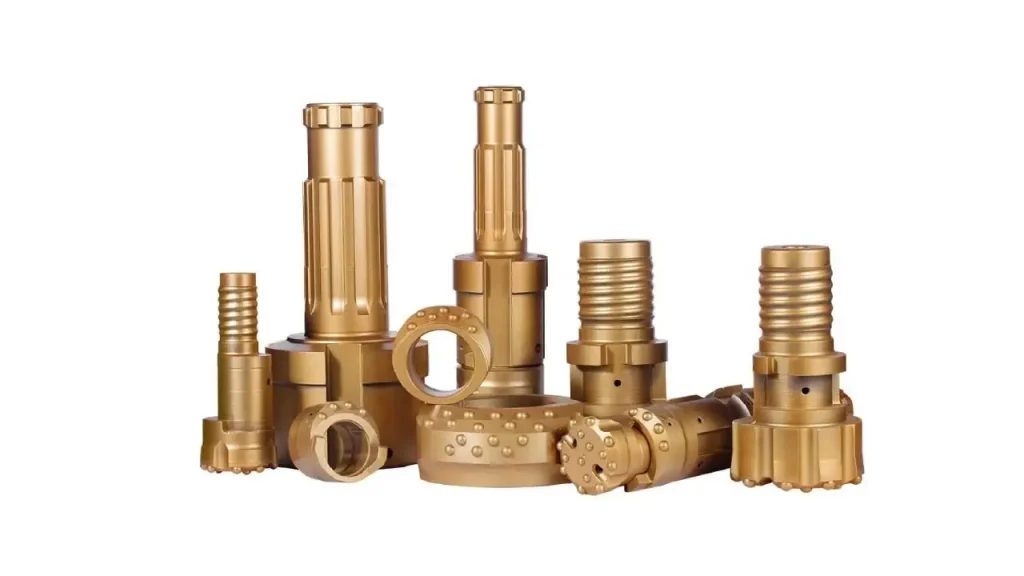
An eccentric casing system is a specialized drilling method used to simultaneously drill and install a casing tube into a borehole. This technique, also known as ODEX (Overburden Drilling with Eccentric Casing), is particularly effective in unstable or difficult ground conditions like gravel, sand, or fractured rock. The system works by using a down-the-hole (DTH) hammer and a unique eccentric drill bit that creates a hole slightly larger than the casing, allowing the casing to follow immediately behind.
- Pilot and Reaming Sections: The bit consists of a small pilot section that drills the initial hole, and an eccentric, retractable reaming wing that enlarges it.
- Simultaneous Casing Installation: As the bit drills and the reaming wing opens, the larger-diameter casing is simultaneously hammered down, following the bit and immediately stabilizing the borehole.
- Borehole Stability: This simultaneous drilling and casing process prevents the borehole from collapsing, which is crucial when drilling through loose or caving overburden formations.
- Retrievable Tool: Once the desired depth is reached, the drill string is reversed, causing the reaming wing to retract so the entire drilling assembly can be retrieved through the installed casing.
What is the Concentric Casing System?
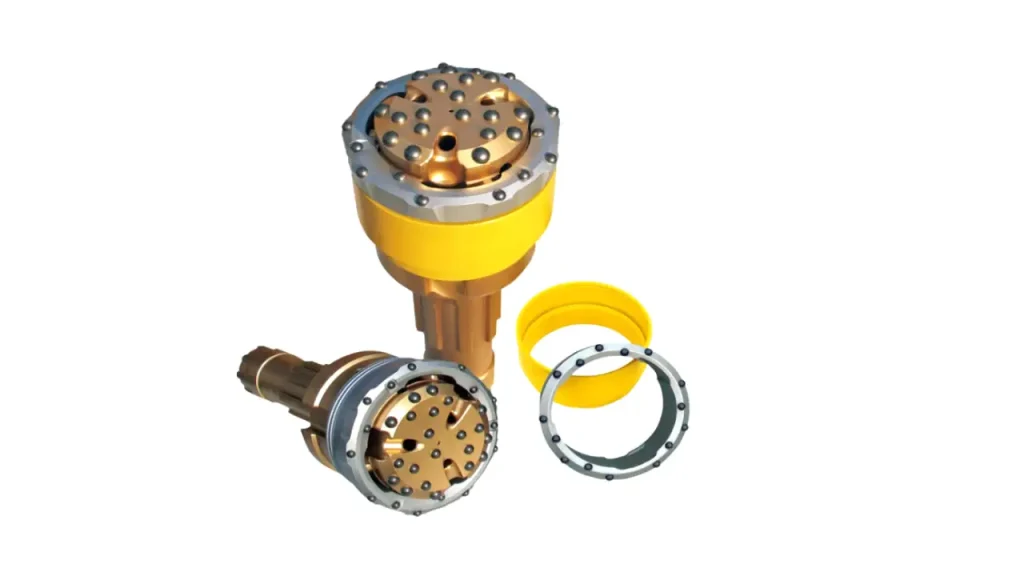
A concentric casing system is a drilling method that involves drilling and simultaneously installing casing into a borehole. This system uses a pilot bit and a reamer, which are centered along the same axis. Unlike eccentric systems, both the drill bit and the reamer are symmetrical, and they work together to drill a hole larger than the casing, allowing the casing to advance immediately behind the bit. It is particularly effective in stable, consolidated formations where there is less risk of borehole collapse.
- Symmetrical Design: Both the pilot bit and the reamer are aligned on the same central axis, ensuring a perfectly concentric hole is drilled.
- Dual Function: The system simultaneously drills the hole with a pilot bit and enlarges it with a reamer, allowing the casing to be installed in one single process.
- Ideal for Hard Formations: This system is well-suited for stable rock formations where there is no risk of the borehole collapsing before casing is installed.
- Easy Retrieval: The reamer is designed to be retrieved easily from the borehole, either by reversing the rotation or through other mechanical means.
Eccentric vs Concentric Casing System
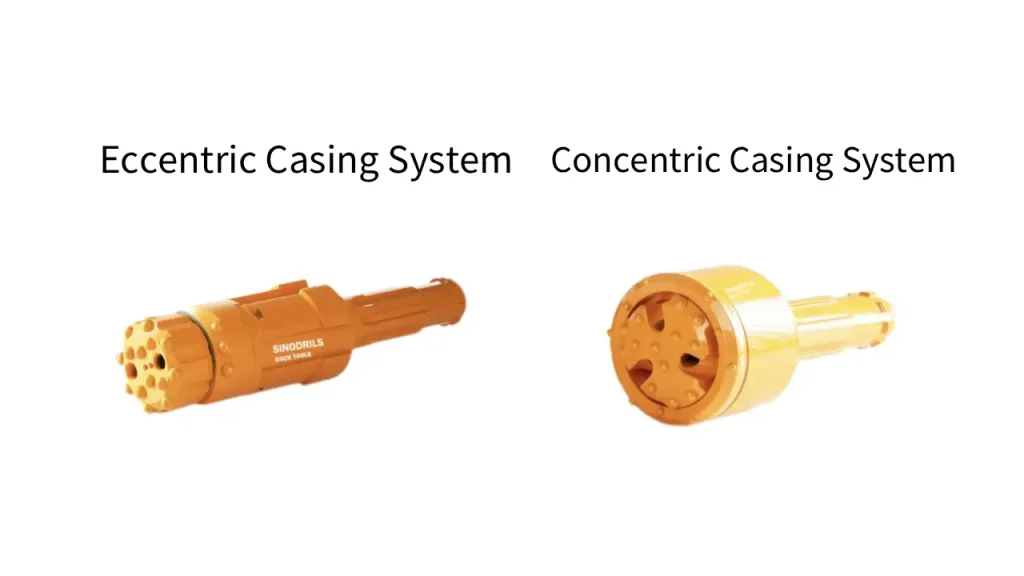
When tackling challenging drilling conditions, particularly through loose or unstable ground, selecting the right casing system is vital. The two most common methods are eccentric and concentric casing systems, each designed to drill and install casing simultaneously.
While both systems serve the same fundamental purpose, their design and operational principles are very different. Understanding the distinctions between them will help you choose the best tool for your specific project, whether you’re dealing with overburden, fractured rock, or mixed formations.
1. Design and Mechanism
Eccentric systems, such as ODEX, use a bit with a reaming wing that extends outward when drilling begins, creating a hole larger than the casing. This off-center design allows the bit to pass through the casing while being retrieved. It’s a reliable method for preventing borehole collapse.
Concentric systems, also known as symmetric systems, use a pilot bit and a reamer that are both centered along the same axis. They drill and enlarge the hole simultaneously, with a design that creates a perfectly round hole. Unlike eccentric systems, there is no reaming wing to swing in or out.
2. Formations and Applications
Eccentric systems are specifically designed for drilling through unstable and overburden formations, such as gravel, boulders, and fractured rock. The design allows the casing to follow immediately behind, preventing the borehole from collapsing. They are often used for shallow holes where the ground is especially difficult.
Concentric systems are well-suited for stable, consolidated rock formations. Because the system is less prone to deviation and wear on the bit, it can achieve a straighter and more consistent hole, making it ideal for deeper holes or projects requiring a precise rock socket.
3. Drilling Efficiency
Eccentric systems can be slower and less efficient in hard rock due to the unbalanced drilling action caused by the off-center wing. The excessive torque can also put more stress on the drill rig and components, which may lead to more maintenance and slower penetration rates.
Concentric systems generally offer better penetration rates in hard and consolidated formations. The symmetrical design transfers hammer energy directly to the cutting face, resulting in smoother drilling with less torque and wear on the equipment.
4. Hole Straightness and Deviation
The off-center nature of eccentric systems can make them prone to “kicking” or deviating, especially when encountering hard, angled boulders. This can lead to a less straight borehole, which may not be suitable for all applications.
Concentric systems are known for drilling straighter holes with minimal deviation. Their symmetrical design provides more stability, making them a preferred choice for projects where borehole straightness is a critical requirement, such as in geotechnical or anchor drilling.
5. Cost and Complexity
Eccentric systems typically have a more complex design with several moving parts, which can be prone to wear and tear. Their components are often more expensive to replace, and the entire system requires careful handling to prevent damage.
Concentric systems have a simpler, more robust structure with fewer components. This can lead to lower manufacturing costs and less maintenance, making them a more cost-effective option for many projects, particularly those in consolidated rock where the system performs at its peak.
| Aspect | Eccentric Casing System | Concentric Casing System |
| Design | Off-center, with a reaming wing that swings out during rotation. | Symmetrical, with a central pilot bit and reamer. |
| Ideal for | Overburden, loose formations, and fractured rock. | Stable, consolidated rock formations. |
| Drilling Efficiency | Slower penetration, higher torque in hard rock. | Better penetration, less torque, smoother drilling. |
| Hole Straightness | Prone to deviation due to off-center design. | Drills straighter holes with less deviation. |
| Cost | More complex design, higher component replacement costs. | Simpler design, lower manufacturing and maintenance costs. |
Eccentric drilling vs concentric drilling
How to Choose Eccentric and Concentric Casing System?
Choosing between an eccentric and concentric casing system depends on the specific geological conditions and project requirements. While both systems are used to simultaneously drill and install casing, their design makes them suitable for different applications.
Eccentric systems are better for unstable, heterogeneous formations where the risk of borehole collapse is high, whereas concentric systems are more efficient in stable, consolidated ground.
- Eccentric Systems: Choose this system for projects in loose, unstable ground like overburden, gravel, or fractured rock. Its unique off-center design allows the casing to follow immediately behind, preventing the borehole from collapsing.
- Concentric Systems: Opt for a concentric system when drilling in hard, consolidated rock formations. The symmetrical design provides better energy transfer and a smoother, straighter borehole, which is ideal for deep holes and precision applications.
Conclusion
Selecting between an eccentric and concentric casing system ultimately depends on the specific geological conditions and project goals. While the eccentric system excels in challenging, unstable formations by efficiently handling borehole collapse, the concentric system offers a straightforward, robust solution ideal for drilling in consolidated rock. Your choice should balance efficiency, cost, and the specific demands of the subsurface environment.
Understanding the nuances of each system allows you to make an informed decision that saves time and money. For projects requiring high-performance tools, it’s vital to partner with a trusted supplier who provides quality products tailored to your needs. This ensures your equipment matches the job, guaranteeing reliability and success from start to finish.
For all your drilling needs, consider us. At Sinodrills, we specialize in providing a wide range of high-quality, wholesale drilling tools. Our extensive selection of eccentric and concentric casing systems is engineered for maximum performance and durability, ensuring you have the right equipment for any project. Contact us today to get wholesale drilling tools from our Sinodrills.

